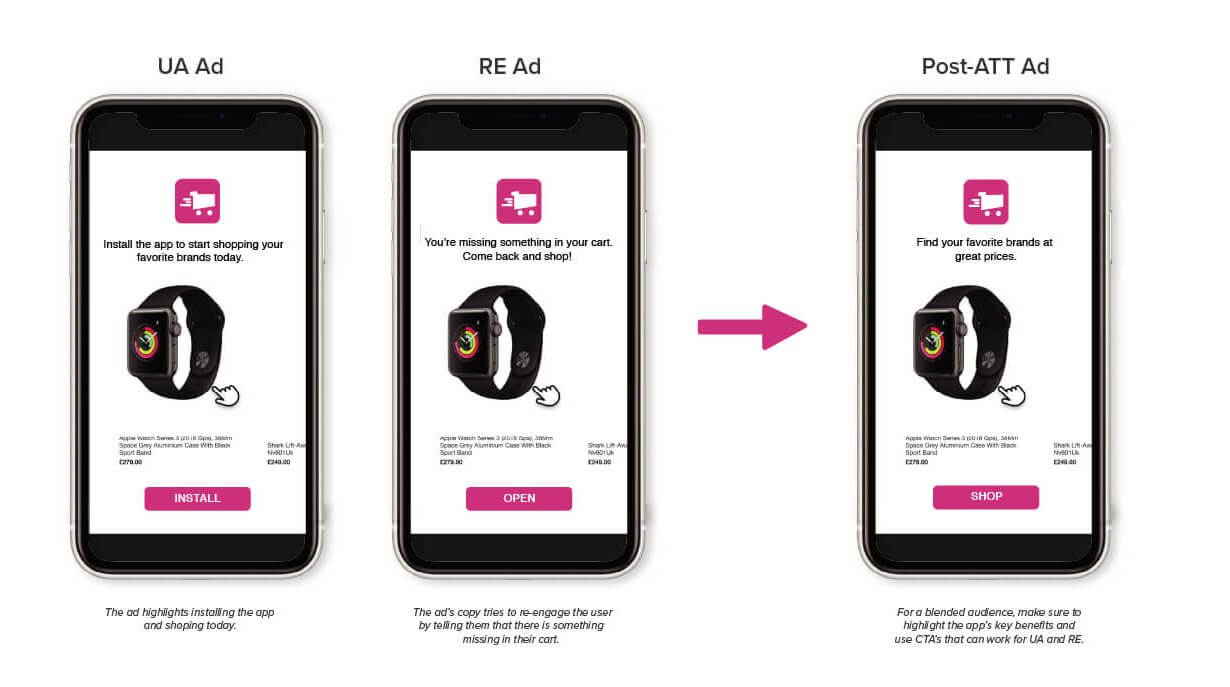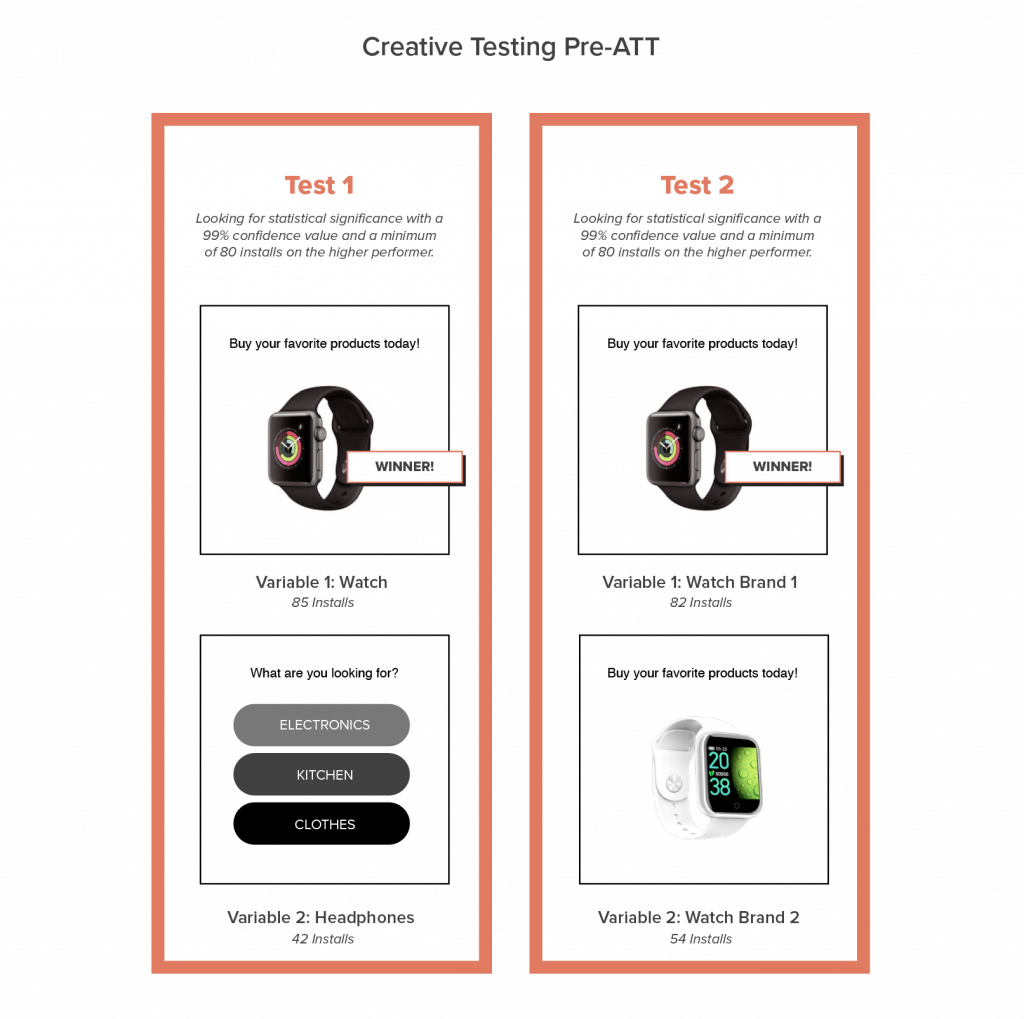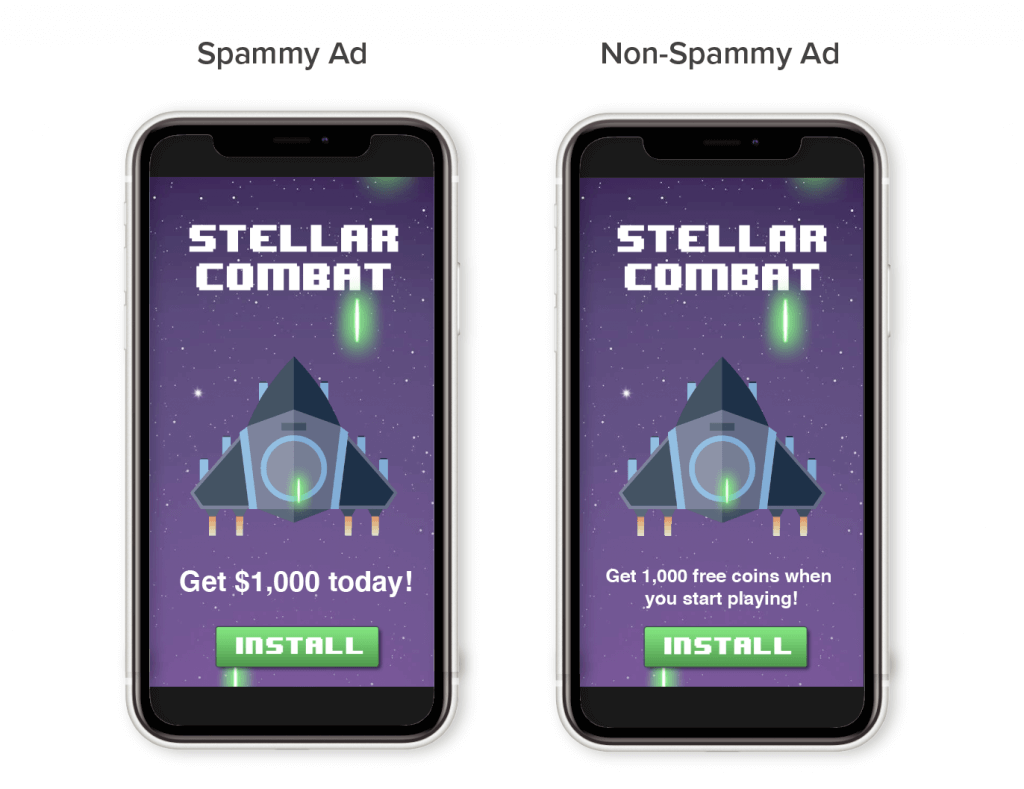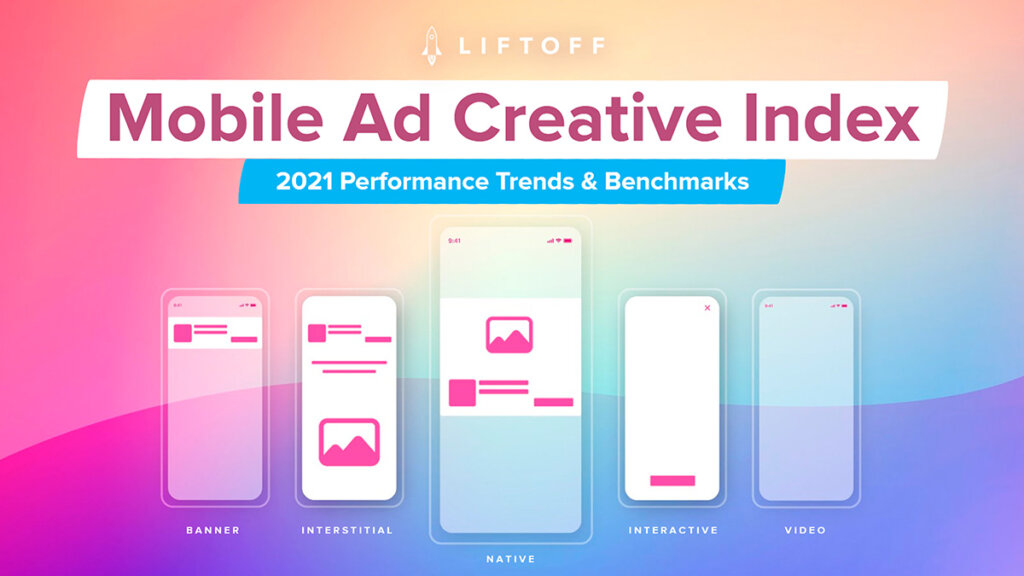
How Do You Optimize Creatives in a Post-ATT World?
With the introduction of Apple’s App Tracking Transparency (ATT), marketers have fewer data points to use for creative testing. And while the need to make better ads hasn’t gone away, the process of optimizing creatives is currently going through a radical evolution.
At Liftoff, our Creative team is rethinking how we can deliver great creatives in a post-ATT world. This means reviewing our creative testing framework to manage the loss of data points from iOS 14.5. This short guide is a collection of what we’ve learned so far, with new approaches to creative optimization and tips on managing the transition to post-ATT ad testing.
What Data Have We Lost?
In my previous article on creative optimization, we set out the framework that gives marketers the ability to achieve greatness through iterative A/B testing. But now, for apps on iOS, that process is no longer an option, as the data you would normally use to A/B test is no longer accessible in Apple’s SKAdNetwork, (or SKAN).
Which data is lost? Post-install events. Before the launch of ATT, marketers could leverage post-install event data to target users based on in-app behavior. However, SKAN doesn’t send event data to advertisers. This means marketers cannot test their creatives based on what converts down the funnel.
Further, SKAN aggregates install data from different creative sources. This limitation has made it impossible to tell which creatives perform better among their peers. This differs from click and impression data, which is attributed to individual creatives. Here’s what a creative tester sees:

Before iOS 14.5, creative testers at Liftoff utilized conversion rates (like impression-to-install) to do the heavy-lifting of creative A/B testing. To adapt to ATT, we are changing our approach to use top-of-funnel (TOF) metrics in place of conversion rates. Though less granular, TOF metrics can have a big impact, but only if you act with intent.
Through many internal discussions, we’ve come up with three general principles that you can apply to creative testing in the post-IDFA era. To make the best ads possible, use these principles in the planning stages of your next campaign to maximize potential outcomes.
User Acquisition and Retargeting Are the Same
If app marketing were a class in school, one of the first lessons would be that user acquisition (UA) and retargeting are distinct activities that require different messaging. But the introduction of ATT means that these once-separate activities now need to be combined. SKAN has ended our ability to know if a user has already installed the app or not. That means we’ve also lost the ability to target users with different messages, such as asking whether a viewer would want to install an app for the first time.
As such, creating new ads requires marketers to ask themselves: “how can I design my ads to appeal to both old and new users at the same time?” Here’s a simple e-commerce example:

While the visuals don’t necessarily change, the copy becomes a little more subtle. Clear calls to action (CTA) have to be dropped in exchange for a message that can apply to everyone.
Creative Testing is Less Granular
In our creative testing framework, we described a two-tier process of building creatives. First, a creative designer would build broad general concepts and test them against each other. Once the designer finds that best-performing concept, variations of that concept would be created and tested to improve the ad. These iterations would be much smaller in ambition, such as changing copy, button color, or CTA.

Now, limitations on data mean creatives can’t be compared easily. Marketers no longer know which creative variation in the same campaign is performing better based on installs.
To combat data loss, marketers need to think bigger. It’s no longer about finding the small combination of elements in an ad that works, but about making those bigger concepts better and making extensive changes overall.
In the future, marketers will need to take more significant risks with novel approaches in their ads. However, you should not increase overall ad volume—this adds noise that will make the overall picture of your ad performance unclear.
Authenticity is Everything
It’s important to acknowledge that marketers must focus on original ideas that will draw users to their app. Without measurable activity, the risk that marketers use data loss as an excuse to run misleading ads increases. Unscrupulous UA managers could try to optimize click-through rates, which often lead to poor creative output.
I’ve seen many different spammy tactics, from a creative saying “win $200 now”, or making other exaggerated claims:

While this might seem a tempting tactic, you could be playing with fire. Exchanges frequently flag misleading creatives, with the potential to have your app (or app portfolio) blocked entirely.
It’s far better to utilize more authentic messaging in your app. Returning to our example, a creative that includes the app title and images with the text “Sign up today to win $200” shows exactly what the value is for the app and isn’t misleading.
If you’re focused on performance beyond the install, ads that show how the app functions will always outperform spammy variations. Broadcasting an authentic message is vital.
Brave New World
What will work best for your brand might not be what’s already out there. As we enter a new age of creative invention, it’s essential to try new things and be bold in your creative decisions. Ad creatives are one of the few levers marketers have left to pull, don’t waste the opportunity to experiment.
